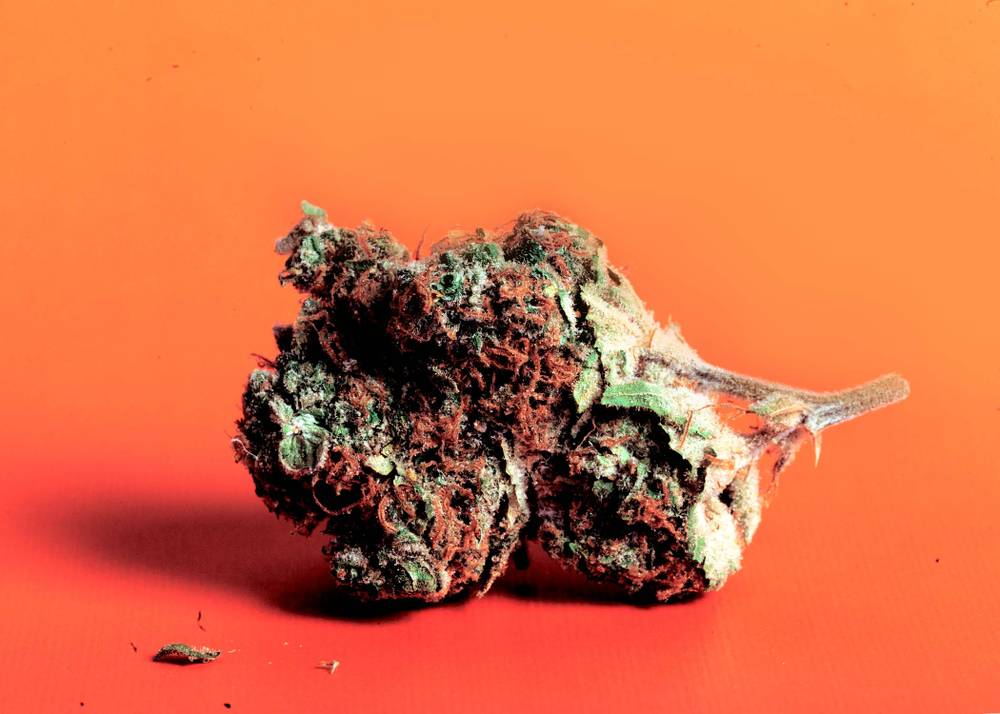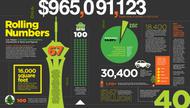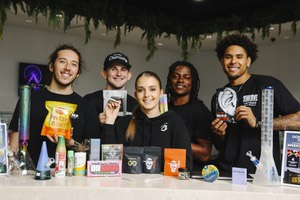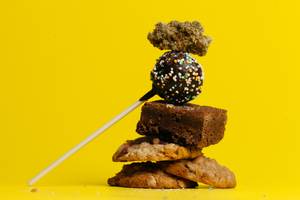On November 8, Nevadans will decide whether to legalize marijuana for recreational use. (The drug has been legal for medicinal purposes since 2000, though the first regulated dispensaries didn’t open here until last year.) Debate continues over the merit of the recreational initiative—marijuana remains a Schedule 1 drug at the federal level, and the DEA announced it would remain illegal for any purpose as recently as August—but polling suggests Question 2 will pass. In July, a KTNV-TV 13 Action News/Rasmussen poll had support at 50 percent, with 41 percent in opposition. With those numbers shifting by September to 53-39 in favor, it seems likely Nevada will join Colorado, Oregon, Alaska and Washington state in legalizing recreational marijuana. What, exactly, will that mean on the ground? Some of it’s speculative at the moment, with the state legislature likely to work out details in its upcoming sessions. Still, our reporters branched out to break down everything known and unknown, for a primer we present here.
What, exactly, will be legal?
The purchase and consumption of up to one ounce of marijuana plant from legal dispensaries, or up to an eighth of an ounce of marijuana concentrates (like wax, CO2 oil and shatter), per day. Recreational users will also be free to buy marijuana paraphernalia, like bongs and glass pipes, some of which are currently outlawed.
Also, those living outside a 25-mile radius of any marijuana dispensary will be permitted to cultivate up to six marijuana plants at home for personal use.
Where will smoking be permitted?
On private property, including front and backyards, but no-go on sidewalks or in parks—for now. Nevada State Sen. Tick Segerblom, who helped lay groundwork for the state’s medical marijuana conditions during the 2013 state legislative session, says Nevada’s “lenient” clean air regulations make it “uniquely qualified” to allow cannabis consumption in certain public spaces, and that he hopes to move legislation to that end soon.
Who will be able to purchase and smoke?
Adults 21 and over with a valid U.S. ID or international passport verifying their age. As with alcohol, a person’s criminal record won’t be considered. “They just want to verify you’re over 21,” says Yes on 2 campaign spokesman Joe Brezny.
Once legalized, how soon will marijuana become available for recreational use?
Much as some might like to light up on November 9 (or, depending on the results of the presidential race, need to), it will take some time for legal cannabis to become widely available in Nevada—perhaps up to two years.
“What I imagine is going to happen is that, after the vote, this will go to a legislative session in the spring,” Bocskor says. “It’s entirely possible that we could have regulations drafted and applications being accepted by August.” Processing those applications will take time, as will setting up the businesses, stocking them with product and so on. The Nevada Legislature has very little room to hamstring legalization, however: “They have to follow the will of the voters,” Bocskor says.
Where will it be available?
As it now stands, the Division of Public and Behavioral Health regulates Nevada’s medical marijuana dispensaries, while the Department of Taxation is set to regulate recreational marijuana—but that could change. “[Legalization is] a two-year process,” Segerblom says. “In that time, we can change the law and put the medical program under Taxation, so that the same people will be regulating both.”
That means your local medical dispensary won’t suddenly begin selling recreational weed this winter. But once the dust settles and recreational licenses are made available, current holders of medical marijuana licenses will be the first invited to apply for them. They’ll still need to go through “a competitive licensing process,” says Bocskor, who anticipates twice as many recreational licenses will be up for grabs than medical marijuana licenses were put on offer several years ago.
What types of products will be available?
Milton Giron, manager at the Henderson branch of Essence Cannabis Dispensary, says he expects the same products medical users can buy now to be available to recreational buyers if Question 2 passes. Which means customers would be able to purchase hundreds of different strains of the plant (indicas, sativas and hybrids); edibles, including cannabis-infused beverages; concentrates like hash and tinctures; medicinal suppositories, sublingual lozenges and more.
Giron says that recreational products might “cater to individuals who want to relax and have a good time,” a different mission from many of the medicinal products sold here over the past year and a half. “You wouldn’t believe the amount of [medical] patients that consume CBD [cannabidiol, the non-psychoactive constituent of cannabis], rather than THC,” he says.
Also worth nothing: Though Question 2 allows for the purchase of one ounce per day, medical patients are limited to 2.5 ounces (70 grams) within a 14-day period.
What will the quality be like?
Will medical users get the good stuff, leaving recreational customers with the schwag? “Considering any marijuana grown in the state of Nevada is subject to the exact same rules, the quality should stay the same,” Giron says.
How much will it cost?
Prices vary by dispensary, but the average price of medical marijuana “flowers” (the stuff on our cover) runs between $13-$18 per gram and $30-$60 for an eighth of an ounce. Giron says recreational consumers should expect a 15 percent tax. (Medical users now pay 2 percent tax, beyond standard sales tax.) Customers would also be able to purchase larger amounts—quarter, half or full-ounce portions.
How will local gaming react?
Could we see dispensaries in casinos? “Not until federal prohibition [of marijuana] drops,” says Leslie Bocskor, president of Electrum Partners, a cannabis business advisory firm. The federal ban is nothing Las Vegas-based gaming companies would care to test; for openers, it could affect their ability to get gaming licenses in other states and countries. But Bocskor can imagine legal use “creeping closer” to the resort corridor over the next few years, until: “I wouldn’t be surprised if, seven years from now, casino restaurants have a wine list and a cannabis list.”
Will Nevada have a ‘weed czar’?
It wouldn’t surprise Bocskor if “a cannabis control board, much like a liquor control board, that was in charge of all aspects of cannabis, both medical and adult use” were to come into being. And we might not even wait for “prohibition” to be lifted: “Nevada’s had a good policy of not waiting for the federal government to tell them what to do, and in this case, I agree with it,” Bocskor says.
Who will benefit from the tax dollars?
Most everyone. “I believe we’re looking at an overall economic impact of $1.1 billion dollars a year,” Bocskor says, adding that, “It may take us a few years to get to that point.” He expects “$60 million plus” in tax revenues for the state, and “a net of $20 million per year” for Nevada’s woefully underfunded schools. “As the parent of a five-year-old boy, I can’t tell you how meaningful that is to me,” Bocskor says. “This could be one of the best things we’ve seen happen for education in Nevada in decades.”
What will penalties be like for those violating the new laws?
Driving under the influence of marijuana will remain illegal, and violators of the law will be subject to DUI charges. Selling (or giving) marijuana to those under 21 will also be illegal, and subject to misdemeanor and felony charges, depending on how much is being sold and to how many minors.
Those growing more than six cannabis plants at home—or growing within 25 miles of a dispensary—could face penalties as small as a $600 fine and a misdemeanor citation for a first offense, or as large as a Category E felony beyond their third offense, depending on the size of the illegal grow. Home growers will also be prohibited from growing marijuana in plain sight of a public place.
Those caught smoking in public will also be subject to a fine, Segerblom says.
Will regulations regarding driving with marijuana in the body change?
Not likely. NRS 453A.300 lays out activities for which medical marijuana users (and presumably future recreational ones) are not exempt from state prosecution, including “driving, operating or being in actual physical control of a vehicle or a vessel under power or sail while under the influence of marijuana.” And NRS 484C.110 defines “unlawful amounts of marijuana in the blood or urine” as 10 nanograms per milliliter of urine and two nanograms per milliliter of blood.”
“I can tell you with absolute certainty that if you’ve consumed cannabis within the past 14 days, you will have two nanograms in your system,” Giron says. “Measuring the amount of nanograms of THC in your blood is a terrible way to navigate if a person can drive or operate machinery. It’s not a way to determine whether a person is intoxicated or not.”







